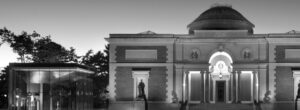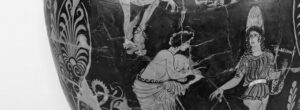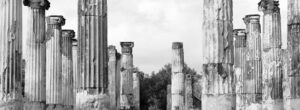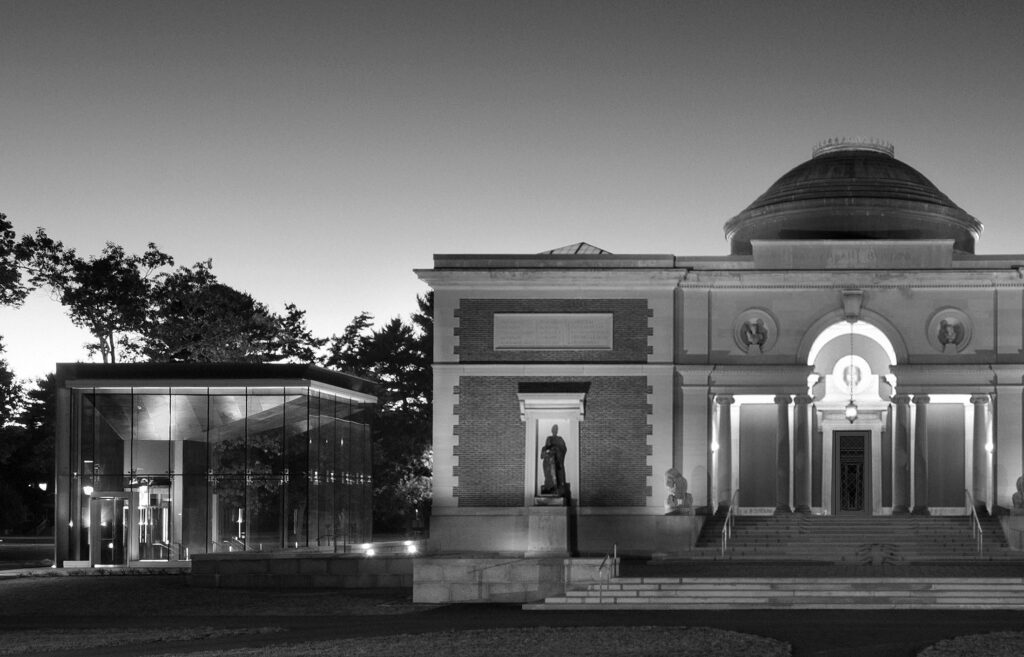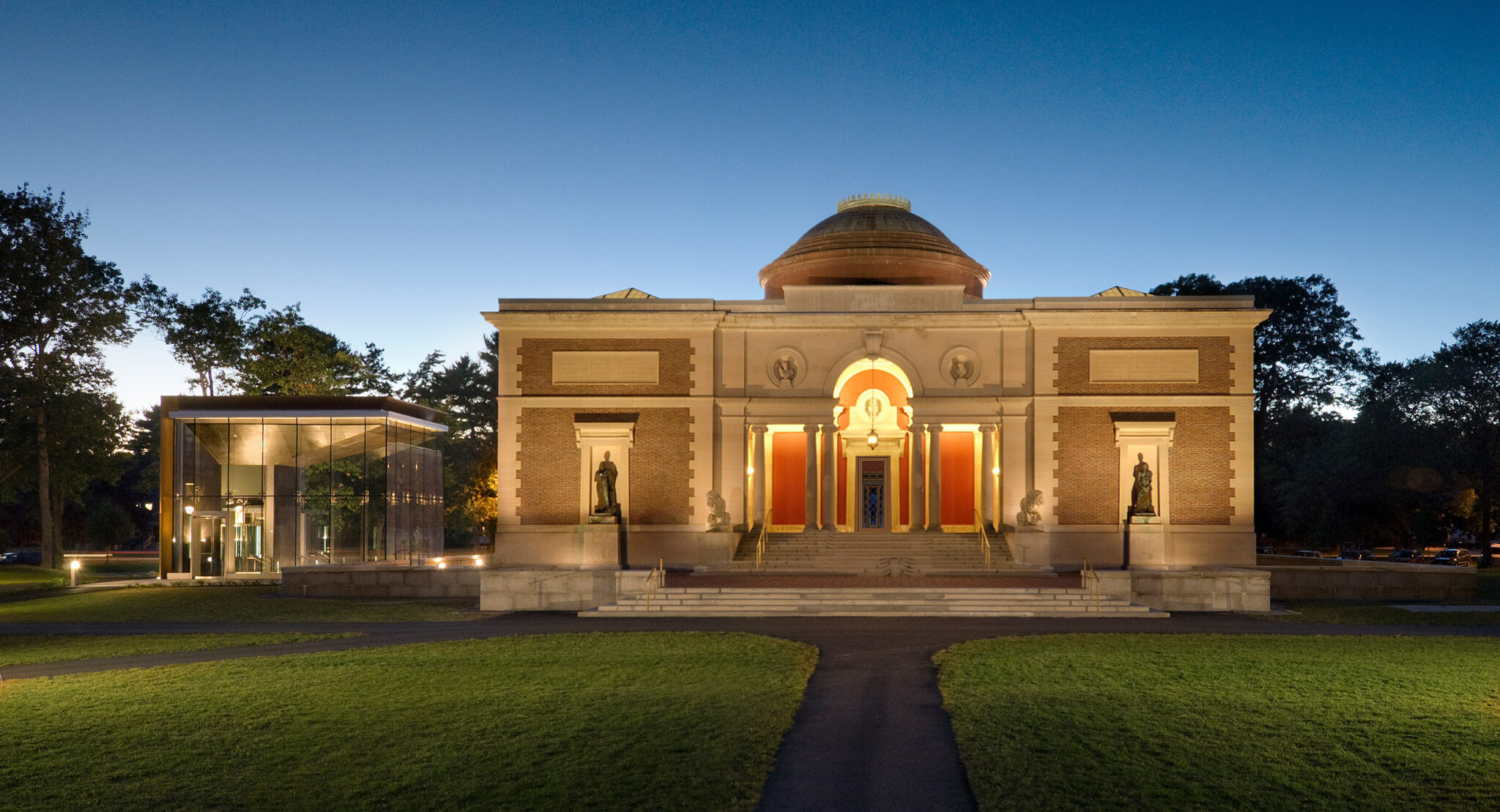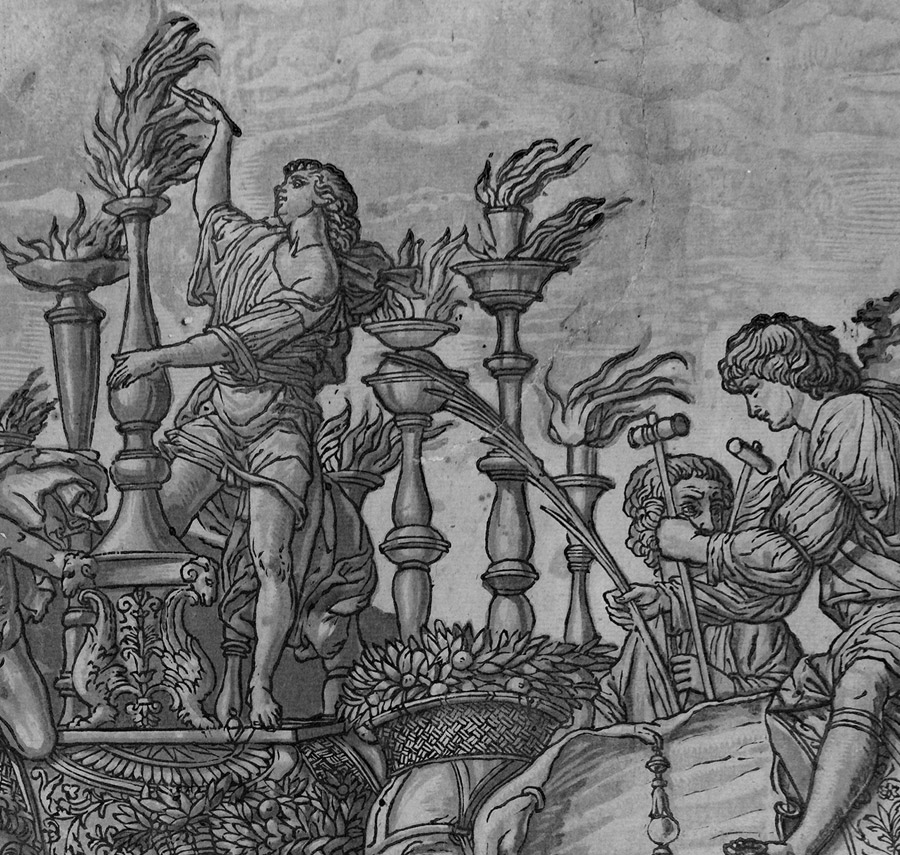Founded in 1794, not long after the United States achieved independence, Bowdoin College reflects enlightenment ideals that interconnect education and democratic principles and that place a premium on familiarity with the past. The arts played key role at the College from its earliest days, with the campus hosting one of the nation’s first public collections of art. This collection was formed in 1811 with the bequest of James Bowdoin III, who gifted to the College bearing his family’s name a collection of some six dozen European and American paintings and a group of 150 drawings—at the time one of the finest art collections in the country. While Bowdoin’s collection contained no antiquities—authentic ancient art and artifacts were almost unknown in America at this time—the varied subjects of the artworks evince a reverence for the ancient world and for scenes of Greek and Roman myth and history. Bowdoin’s collection is a testament to the classicizing tastes of Americans that endured for centuries and encompassed not only America’s elite but cut across all strata of American society.
Today the Bowdoin College Museum of Art’s collection of nearly two thousand antiquities spans the ancient world from Italy to Iraq and chronicles some four thousand years of human history and culture. The collection ranks among the most prominent collegiate and regional collections and neatly parallels the broader phenomenon of American interest in antiquity and its arts, serving as a remarkable bellwether for the evolving taste and motivation behind American collecting of antiquities. Antiquity & America highlights more than one hundred of Bowdoin’s most remarkable examples of art from across the ancient world, from the civilizations of the Egyptians, Assyrians, Greeks, and Romans and encompassing marble and bronze sculpture and figurines, Greek painted vases, Roman glass, numismatics, and many other categories of ancient art and artifacts.
Along with ancient artifacts, Antiquity & America explores the stories of their American collectors, whose activities are intertwined with the development of the Bowdoin collection. From early collectors like James Bowdoin III, an antiquarian collector and early supporter of the fine arts in America, to Edward Perry Warren, the Gilded Age antiquities collector and purchasing agent for the Museum of Fine Arts Boston, the individuals who formed Bowdoin’s collections parallel a larger story behind antiquities collecting in the United States. The exhibition explores the ways they collected and conceived of the ancient world, shedding light on the evolving role of ancient art and artifact in American conceptions of the past.
Antiquities & America also seeks to contextualize these collectors within the cultural landscape that shaped their activities and which, in many cases, they hoped to shape. To better understand this historical moment, the exhibition considers the influence of antiquity on American artists who both looked to ancient examples for instruction and creatively conceived of the ancient world as a way to comment on America. American artists played a remarkable role in the creation and consumption of antiquity that was part and parcel of the creation of America.
The exhibition explores these aspects—antiquities, American collectors, and American artists—through three periods of United States history. During the late Colonial and early American periods (ca. 1750–1812), authentic antiquities were few and far between in the United States, and Americans encountered antiquity first and foremost through reproductions and recreations in prints, plasters, and paintings. In the formative years between the war of 1812 and the Civil War, the United States took its first tentative steps on the world stage, and antiquities began arriving in America through the efforts of American diplomats, missionaries, and military men. Lastly, the American prosperity and technological advances of the Gilded Age ushered in a new era of American encounters with the ancient world both at home, through the formation of major private and public antiquities collections, and abroad, through increased tourism and travel.
